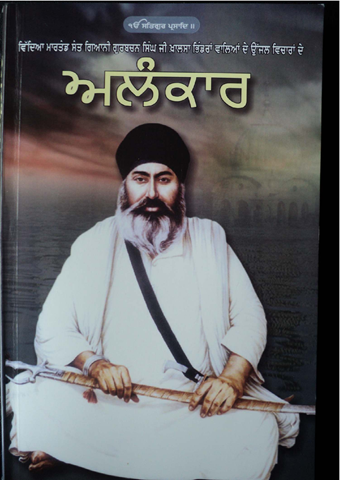ALANKAR,is the singing of notes (seams) in the melodic phrase of a raga. It can be done in different laya (tempo) which may be slow, medium or fast. A lankar literally means an ornament or decoration. It is the repetition of the musical notes of a raga in a sequential pattern.
It evokes the mood and environment of the raga. Alankar fall into four categories: Vocalisation which returns to the initial note or Sa. ascending vocalisation, descending vocalisation, consolidated vocalisation using all the three types.
References :
1. Encyclopedia of Sikh Religion and Culture, R.C.Dogra and Dr.G.S. Mansukhani 1995
In Sikh musicology, Alankar refers to the melodic ornamentation or embellishments used in the performance of raags (musical scales). The term Alankar literally means “ornament” or “decoration,” and it involves the systematic repetition of musical notes in a sequential pattern to enhance the beauty and emotional depth of a composition.
Alankars are categorized into four main types:
- Ascending Vocalization: Notes are sung in an ascending order.
- Descending Vocalization: Notes are sung in a descending order.
- Consolidated Vocalization: A combination of ascending and descending patterns.
- Vocalization Returning to the Initial Note: The melody returns to the starting note, often creating a cyclical effect.
These techniques are integral to the performance of Gurbani Kirtan (Sikh devotional music) as they evoke the mood and spiritual essence of the raags. The use of Alankars allows musicians to express the intricate emotions embedded in the hymns of the Guru Granth Sahib.



